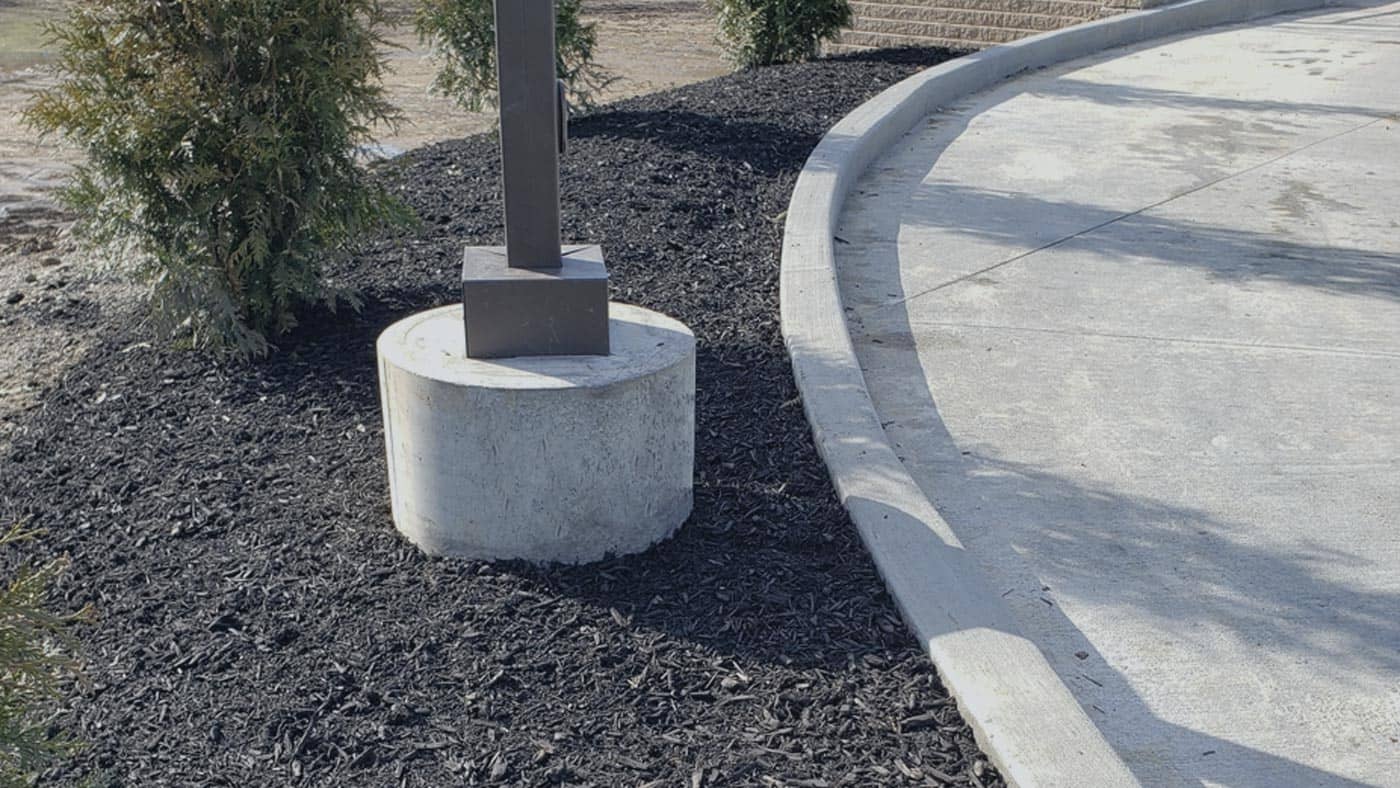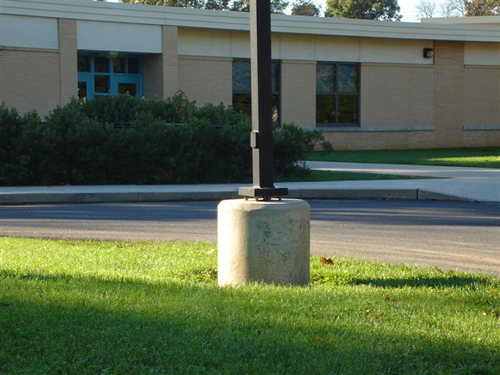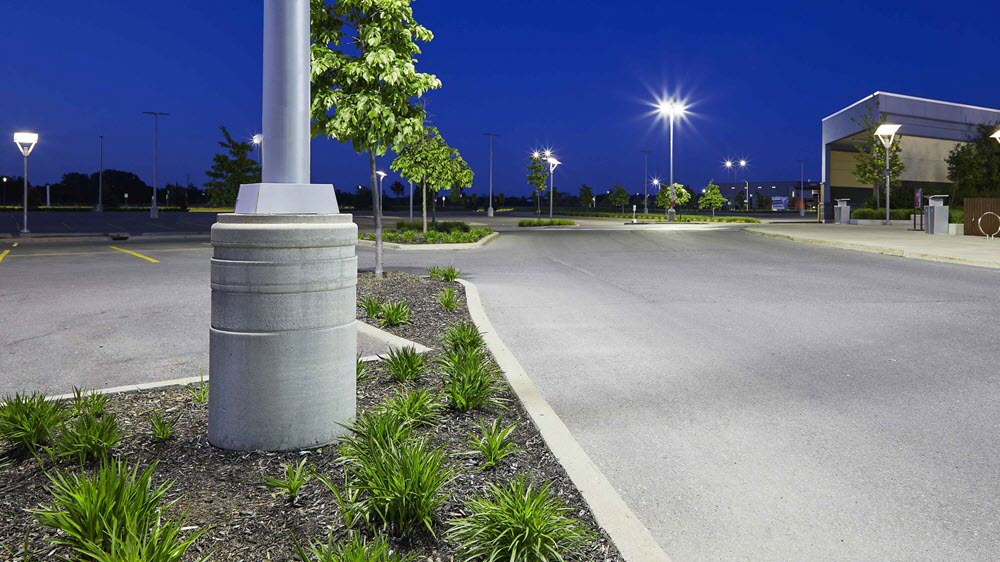Flood Light Base Servicesin Clinton Township MI
Comprehensive Flood Light Installation for Enhanced Safety
We Are Locally Owned & Operated For Over 37 Years
Contact Us Today!
We Serve Businesses In And Around The Following Cities:
About Flood Light Base Services
Introduction
The effervescent city of Clinton Township is not only dynamic in its economic expansions but also in its ever-improving infrastructural aesthetics. One of the significant areas evident in this exponential growth is the inclusion of flood light bases in commercial properties. Offering a myriad of benefits ranging from safety lighting to creating an irresistible beauty of the urban landscape, these floodlights are instrumental in revitalizing the formerly dull enterprise spaces.
Flood Light Bases: what are they? For the uninformed, these are robust structures on which floodlights are mounted. They are redesigned to withstand varying weather conditions while supporting the weight and working performance of floodlights. They come in different designs serving the unique needs of different commercial properties. This guide effectively takes you through the process, benefits, and real-world applications of these flood light bases in Clinton Township.
Understanding the Process
The installation of flood light bases is much more intricate than most property owners would imagine. The operation typically begins with a formal evaluation of the property to determine the appropriate type and size of the base, along with identifying the best installation locations. Once these factors are established, the base foundation is laid, carefully ensuring it is firm and level.
Firms like D&J Contracting specialize in setting up flood light bases with apparent meticulous attention to detail. The uninitiated might overlook seemingly minute factors like soil type and plinth area size which could ultimately hinder the base’s stability and functionality. Ensuring that the base is installed properly is critical to prevent any risk of toppling or performative hindrance of the attached floodlight.
Unveiling the Benefits
Installing flood light bases is more than just an aesthetic addition to commercial properties. It plays an inherent role in lighting up vast areas, deterring suspicious activities, and visually enhancing premises during darker hours, ensuring regular business operations go unhindered.
One cannot also ignore the psychological advantage such lightning offers. An adequately lit business environment induces a feeling of safety and welcome, thus making clientele and employees feel more comfortable. Consequently, this could lead to better business relations and an increase in productivity.
In the realm of Clinton Township, with its rapidly urbanizing spaces, flood light bases have become a necessity. They contribute to the township’s security, enhance the works of art within the commercial districts during night hours, and augment the architectural beauty of buildings. D&J Contracting, for instance, has significantly influenced this narrative through its remarkable installation and maintenance services for those lights.
Real-World Applications
The applications of flood light bases in Clinton Township, on commercial properties, are diverse and impactful. You can witness them in action atop buildings, lighting up billboards for better visibility, and along the passages of car park spaces for security and navigation.
Consider, for example, a scenario where they’re used at car dealerships. These lights brightly illuminate the cars on display, making them visible and attractive even after sunset. This level of visibility is beneficial for businesses that operate in the evening hours or have clients who prefer to browse after work hours.
Event venues in the township have also seen the transformative power of flood light bases. They work seamlessly in illuminating expansive areas such as concert grounds or stadiums, helping to ensure safety and visibility.
Furthermore, D&J Contracting’s expertise in the installation of flood light bases has significantly impacted the beautiful nocturnal landscape of Clinton Township. They’ve executed several projects that have helped commercial buildings and spaces become more secure, more engaging, and attractive, creating a positive and lasting impression on the visiting clientele.
Final Reflection
Exploring the city of Clinton Township at any hour of the day reveals the strategic role that flood light bases play in shaping its thriving commercial scenes. They subtly yet powerfully speak to the city’s expansive growth and the transformation of its commercial quarters. As business owners and city authorities partner with reliable firms like D&J Contracting, the result is a well-lit, secure, and cost-effective commercial environment.
Immersing oneself in understanding the process of installing these flood light bases, recognizing their multiple benefits, and observing their real-world applications is indeed an insightful journey. Involving a team of experts further elevates the value. As they subtly blend architectural creativity, technological advancement, and practical needs of the businesses, they equip commercial spaces with flood light bases that not only fulfill their primary function of illumination but also add an aesthetic flair to the urban cityscape.
As we look towards a thriving Clinton Township and the future of its commercial expansion, the maintenance and proper use of flood light bases remain a relevant conversation. Property owners and business operators in the township are encouraged to adopt this lights system. D&J Contracting continues to extend its expertise in serving the township, ensuring commercial properties are well lit, safe and visually pleasing.
Flood Light Base Services Gallery


Call Us Today to receive your Free Quote for
Flood Light Bases in Clinton Township
Serving: Clinton Township, Michigan

About Clinton Township, Michigan
The first settlement on the land that is now Clinton Township was called Gnadenhuetten and was established in 1782 by Rev. David Zeisberger, but closed in 1786. It was organized as “Huron Township” on August 12, 1818, named after what was then known as the Huron River. Because of confusion with another Huron River south of Detroit, on July 17, 1824, the Michigan Territorial Legislature renamed both the township and the river after DeWitt Clinton, the popular governor of New York from 1817 to 1823 who was largely responsible for building the Erie Canal which enabled many settlers to come to Michigan.
Moravian Drive is the township’s oldest road, dating back to the days when Moravian missionaries settled to attempt to convert the local Native Americans.
Clinton Township is in south-central Macomb County. The city of Mount Clemens, the Macomb county seat, is bordered on three sides by the northeast part of the township.
According to the United States Census Bureau, Clinton Township has a total area of 28.37 square miles (73.5 km), of which 28.03 square miles (72.6 km) are land and 0.35 square miles (0.91 km), or 1.22%, are water. The Clinton River, for which the community is named, is formed from three branches within the township. It runs east into Harrison Township, where it flows into Lake St. Clair. The township is home to many parks, notably George George Memorial Park.
There are two unincorporated communities in the township:
- Broad Acres is located in the southeastern portion on M-3/Gratiot Avenue between 15 Mile and Quinn Roads (42°32′57″N 82°54′08″W / 42.54917°N 82.90222°W; Elevation: 610 ft./186 m.).
- Cady is located in the southwestern portion at Utica and Moravian Roads (42°33′37″N 82°57′52″W / 42.56028°N 82.96444°W; Elevation: 614 ft./187 m.). It was founded in 1833 by Chauncey G. Cady. Cady served for a time as township supervisor and was also a member of the state legislature. It had a post office from 1864 until 1906.
| Census | Pop. | Note | %± |
|---|---|---|---|
| 2000 | 95,648 | — | |
| 2010 | 96,796 | 1.2% | |
| 2020 | 100,513 | 3.8% | |
| 2023 (est.) | 99,377 | −1.1% | |
| U.S. Decennial Census | |||
| Race / Ethnicity (NH = Non-Hispanic) | Pop 2000 | Pop 2010 | Pop 2020 | % 2000 | % 2010 | % 2020 |
|---|---|---|---|---|---|---|
| White alone (NH) | 86,042 | 78,062 | 72,926 | 89.96% | 80.65% | 72.55% |
| Black or African American alone (NH) | 4,424 | 12,509 | 17,428 | 4.63% | 12.92% | 17.34% |
| Native American or Alaska Native alone (NH) | 223 | 230 | 192 | 0.23% | 0.24% | 0.19% |
| Asian alone (NH) | 1,597 | 1,723 | 2,170 | 1.67% | 1.78% | 2.16% |
| Pacific Islander alone (NH) | 11 | 29 | 19 | 0.01% | 0.03% | 0.02% |
| Other race alone (NH) | 82 | 82 | 335 | 0.09% | 0.08% | 0.33% |
| Mixed race or Multiracial (NH) | 1,605 | 1,871 | 4,449 | 1.68% | 1.93% | 4.43% |
| Hispanic or Latino (any race) | 1,664 | 2,290 | 2,994 | 1.74% | 2.37% | 2.98% |
| Total | 95,648 | 96,796 | 100,513 | 100.00% | 100.00% | 100.00% |
As of the census of 2010, there were 96,796 people, 42,036 households, and 25,678 families residing in the township. The racial makeup of the township was 82.08% White, 13.04% African American, 0.28% Native American, 1.79% Asian, 0.03% Pacific Islander, 0.61% from other races, and 2.17% from two or more races. Hispanic or Latino people of any race were 2.37% of the population. By 2016, the township’s population was estimated to have surpassed 100,000.
In 2000, there were 40,299 households, out of which 28.1% had children under the age of 18 living with them, 48.7% were married couples living together, 10.9% had a female householder with no husband present, and 36.6% were non-families. 30.8% of all households were made up of individuals, and 10.8% had someone living alone who was 65 years of age or older. The average household size was 2.35 and the average family size was 2.98.
In 2000, 22.4% of the population was under the age of 18, 9.1% from 18 to 24, 30.9% from 25 to 44, 23.4% from 45 to 64, and 14.3% who were 65 years of age or older. The median age was 37 years. For every 100 females, there were 92.4 males. For every 100 females age 18 and over, there were 88.5 males. The median income for a household in the township was $50,067, and the median income for a family was $61,497. Males had a median income of $48,818 versus $29,847 for females. The per capita income for the township was $25,758. About 4.2% of families and 5.8% of the population were below the poverty line, including 7.4% of those under age 18 and 6.8% of those age 65 or over.
Chippewa Valley Schools, with two high schools (Chippewa Valley and Dakota), and Clintondale Community Schools, with one high school (Clintondale High), are the primary school districts in the township. Other school districts that operate within Clinton Township are L’Anse Creuse, Fraser, and Mount Clemens.
Call Us Today to receive your Free Quote for
Flood Light Bases in Clinton Township
Related Services in Clinton Township, Michigan
We Serve Businesses In The Following Zip Codes:
48007, 48015, 48021, 48026, 48035, 48036, 48038, 48042, 48043, 48044, 48045, 48046, 48047, 48048, 48050, 48051, 48066, 48071, 48080, 48081, 48082, 48083, 48084, 48085, 48088, 48089, 48090, 48091, 48092, 48093, 48098, 48099, 48225, 48230, 48236, 48310, 48311, 48312, 48313, 48314, 48315, 48316, 48317, 48318, 48397